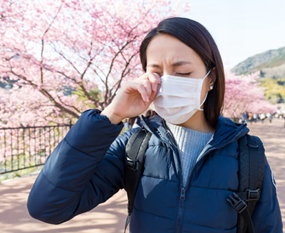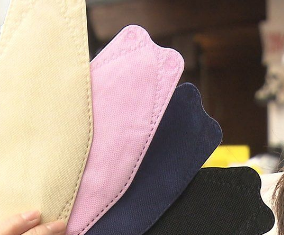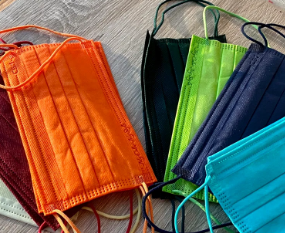Masks have become a part of people's life as daily necessities
In general, masks are often used for epidemic prevention. In Japan, people wear masks in many cases to avoid infecting others with cold or infectious diseases. On the other hand, in Japan, many people will wear masks in public places even if they do not have physical discomfort. One reason is hay fever. About 30% of Japanese suffer from this disease.
Pollinosis refers to the allergic reaction that occurs after the pollen of fir, cypress and other trees enters the human body, resulting in sneezing, runny nose and other symptoms. Especially in spring and autumn, there is a lot of pollen in the air. Many Japanese will sneeze, runny nose and other symptoms in these seasons. Wearing masks can help alleviate these symptoms, so Japanese with hay fever have the habit of wearing masks at school, at work and when going out.

People with hay fever may have allergic reactions when inhaling pollen, which may lead to sneezing, runny nose and other symptoms. Wearing a mask can help prevent this symptom.
As a fashion item, masks are also very popular
With the spread of novel coronavirus, wearing masks in all seasons has become a part of daily life in Japan. Now there is a very active trend to use masks as a popular fashion item, not just a health care product.

Comfortable masks made of cutting-edge technology also appeared
A new era mask made with cutting-edge technology and ideas is coming on the scene.
A swimming supplies manufacturer has developed a mask that can be kept cool for a long time by soaking it in water and then tossing it. This mask is made of swimwear materials and unique cold materials.

When does the general public need to wear masks?
1. In the following indoor places: agricultural (market) markets, shopping malls, supermarkets, cinemas, venues, exhibition halls, airports, docks, hotel public areas and other indoor crowded places.
2. In the following outdoor places: open squares, theaters, parks, etc. with dense population.
3. When taking public transport: when taking van elevator, plane, train, ship, long-distance bus, subway, bus and other public transport tools.
4. When seeing a doctor or accompanying a patient in the hospital. When receiving health checks such as temperature detection, health code verification, and travel information registration.
5. Symptoms such as nasopharynx discomfort, cough, sneezing and fever occur.
6. When the dining room and canteen are in a non eating state.